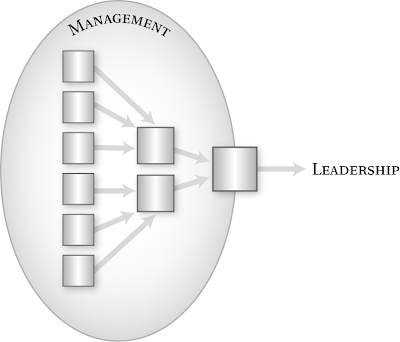– John Kotter, “What Leaders Really Do, Harvard Business Review on Leadership
Leadership is drawing or guiding others by influencing their behavior. Leadership’s main purpose is to cope with change. Leaders influence behavior in many ways and styles, depending on their own personality. Good leadership brings out the best in people by treating them as complete individuals, rather then merely employees. Management, on the other hand, refers to the government or administration of project affairs. Management’s main purpose is to deal with complexity. Tracking progress, reporting status, conducting meetings, maintaining a budget, setting objectives and providing performance reviews are examples of management-oriented tasks. Good management emphasizes rationality and control in bringing discipline and order to the complexity inherent in today’s global business environment.

Although management and leadership are different, they complement one another: leadership allows the Agile Manager to influence people and direct their behavior towards desired outcomes, and management allows her to organize the project and manage its complexity. This complementary balance is illustrated in the adjacent figure (Adapted from Bellinger 2004).
Leadership and management skills are both equally important for the Agile Manager to cultivate. Without management, leadership falls victim to complexity. Leaders who do not employ good management expose their teams to things like the lack of proper coordination, insufficient reporting procedures and inadequate planning. Management without leadership falls victim to a loss of soul. Managers who do not lead may not be able to jell their teams, communicate effectively with them and connect enough with individuals at a personal level to motivate them.
Taken together, the combined requirements for leadership and management might seem extremely daunting. Fortunately, although the Agile Manager’s role is pivotal, it does not mean that she is the sole leader on the project.
Shared Responsibilities
In keeping with the egalitarian ethos of agile methodologies, both leadership and management responsibilities are shared between the Agile Manager, the Technical Coach, the Customer (Product Owner in Scrum), as well as all other members of the project team. This sharing of management responsibilities translates to a shared responsibility for establishing APM principles and practices.
